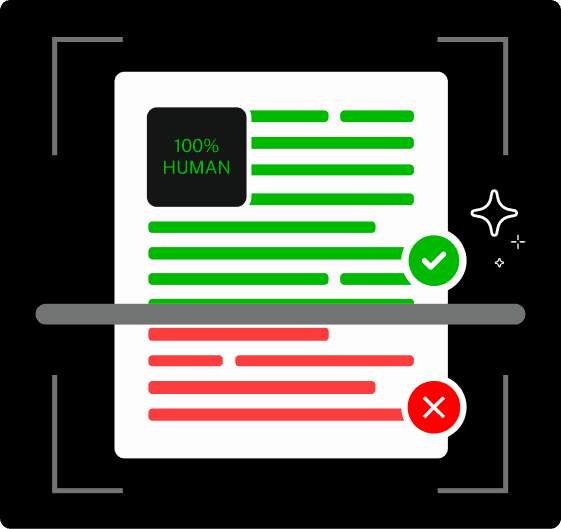Learning a foreign language sounds exciting… until you actually have to sit down and learn it.
The best approach to get fluent fast?
Play to your strengths and choose a language that’s naturally easier to learn.
If you’re not sure which language to choose (or where to book your next vacation), read on for a full breakdown of how language difficulty is measured, which languages are easiest to pick up for English speakers, and how you can use AI tools to speed up the learning process.
TL: DR – If your native language is English, European languages (like Spanish, French, and Dutch) are typically the easiest to learn, because they share grammar, vocabulary, and cultural similarities.
Key Takeaways
- European languages like Spanish, French, and Dutch are easiest for native English speakers to learn.
- The FSI ranks these as Category I languages, requiring about 600–750 hours to reach proficiency.
- Shared grammar, vocabulary, and Latin or Germanic roots make these languages more familiar.
- AI tools can speed up learning by explaining grammar, paraphrasing sentences, and correcting errors.
- “Easy” depends on your native language, motivation, and cultural exposure.
- Starting with an easy language builds confidence and helps you learn more complex ones later.
How Language Difficulty Is Measured

So how exactly is language difficulty measured? Here’s what linguists typically look at:
- Grammar: How many rules does the language have? And how different are those rules from English grammar rules?
- Vocabulary: Do the words share common roots with English words? (For example, animal is the same in both English and Spanish).
- Pronunciation: Are the sounds easy for English speakers to produce? Or do they require totally different tongue and mouth movements?
- Cultural Familiarity: How much exposure do English speakers already have to the language through media, travel, or everyday life?
The FSI (Foreign Service Institute), which is the U.S. government’s training center for diplomats, takes these factors into consideration and then categorizes language difficulty based on how many classroom hours it typically takes an English speaker to reach proficiency.
The Easiest Languages for English Speakers to Learn
So which languages actually make the “easy” list?


Never Worry About AI Detecting Your Texts Again. Undetectable AI Can Help You:
- Make your AI assisted writing appear human-like.
- Bypass all major AI detection tools with just one click.
- Use AI safely and confidently in school and work.
According to the FSI, the languages that take English speakers the least amount of time to learn fall into Category I. This means they typically require about 600-750 classroom hours to learn.
Here’s a list of the top Category I contenders.
| Category I Languages According to the FSI | ||
| Origin | Language | Explanation |
| Romance Language | Spanish | A widely spoken language with straightforward pronunciation and shared vocabulary with English. |
| Romance Language | French | A bit trickier in pronunciation, but you’ll already be familiar with a lot of common words in French vocabulary (think déjà vu, à la carte, and café). |
| Romance Language | Italian | Clear rules for pronunciation and grammar, plus plenty of Italian words are similar to English words (such as università, qualità, and autenticità). |
| Romance Language | Portuguese | The official language of Portugal and closely related to Spanish, making it a great second Romance language to learn without too much difficulty. |
| Germanic Language | Dutch | Shares Germanic roots with English, so the sentence structure feels familiar, making it fairly straightforward to learn for native English speakers. |
| Scandinavian Language | Swedish | Relatively simple grammar and recognizable vocabulary for English speakers. |
| Scandinavian Language | Norwegian | Slightly more difficult language to learn compared to Spanish or Dutch, but it’s known for its consistency and easy-to-follow grammar rules. |
Why These Languages Are Easier for Native English Speakers
One of the biggest reasons why these languages are easier for English speakers to pick up is their shared roots.
Many of them come from either the Romance (Latin-based) or Germanic language families, just like English.
That means sentence structure and word formation feel familiar, which makes the learning curve a bit less steep.
Another big factor is cognates (which is a fancy way of saying words that look and sound almost identical in multiple examples).
Common examples of cognates include:
- Animal / Animal (English–Spanish-French)
- Restaurant / Restaurante / Restaurant (English–Spanish–French)
- Hotel / Hotel (English–French-Spanish-German)
- Color / Color / Couleur (English–Spanish–French; slightly different spelling in French but recognizable)
- Doctor / Doctor (English–Spanish-French-German)
Pronunciation and spelling also play a big role here.
For example, languages like Italian and Spanish are considered to be phonetic languages, which means words are usually spoken exactly how they’re written. (Unlike English, which is chock-full of exceptions).
Using AI to Help You Learn a Foreign Language Faster
Even if you choose one of the “easy” languages, learning a new language is certainly not easy… unless you’re some sort of language genius.
For most people, it still takes a ton of time and practice to feel fully comfortable using a new language.
This is where AI can give you a serious boost.
For example, if you’re confused about word order or stuck on a grammar rule, you can use a tool like AI Chat to break it down into a simple, easy-to-understand explanation.
Or, if you want to see examples of how new vocabulary words can be used, AI Paraphraser can help you rephrase practice sentences.
This can help train your brain to see the same idea expressed in multiple sentence structures.
Last but not least, if you’ve been practicing writing paragraphs or even essays, Translator can help you check your work and provide some inspiration when you get stuck.
Bonus Tip: Don’t forget to use Grammar Checker to make sure your sentences are correct before you lock in any bad habits.
What is the Easiest Language to Learn for Other Learners?

Of course, what feels easy for you may be super difficult for someone whose native language isn’t English.
For Native Spanish Speakers
For native Spanish speakers, other Romance languages like Portuguese, French, and Italian can feel like second nature.
The vocabulary, grammar, and even pronunciation are so similar that it’s possible to reach conversational fluency in a fraction of the time it would take an English speaker.
Plus, they all use the Latin alphabet, which means no struggling with unfamiliar scripts or symbols.
For Native Chinese Speakers
For native Chinese speakers, it’s a completely different story.
While English often feels intimidating because of its chaotic spellings and complex grammar rules, other Asian languages, like Japanese or Korean, often feel more approachable.
That’s because these languages have similar cultural references, writing systems, and linguistic structures that make them feel familiar.
Why “Easy” is Always Relative
The key takeaway here is that “easy” is always relative.
The language you’ll pick up the fastest doesn’t necessarily have anything to do with what the FSI constitutes as an “easy” language.
It’s all about what feels familiar based on the language(s) you already speak and the cultures you’ve been exposed to.
Motivation is also a huge factor. If you grew up watching anime, Japanese may not seem intimidating at all.
Or if you have a cousin who lives in Spain, Romance languages like Spanish or Portuguese might come more naturally to you compared to Germanic languages.
Benefits of Learning an “Easy” Language First

Starting with one of the easier languages for English speakers can be a smart move, especially if it’s your first time learning a second language. Here’s why.
Language is All About Confidence
Most people quit during the early stages of learning. But when you pick a language with familiar vocabulary and straightforward grammar, you’re more likely to see quick progress.
Even the smallest wins can give you the boost you need to keep going.
You’ll Learn How to Really Learn a Language
Learning how to actually learn a language is a skill in and of itself.
Once you’ve mastered the basics of one language, you’ll know what study methods, practice routines, and tools work best for you. This sets a strong foundation for learning a more difficult language.
You Can Actually Start Using It
Easier languages = getting to speak with native speakers sooner. That trip to Paris? You can ask for directions without having to whip out Google Translate.
A weekend in Amsterdam? You can order a coffee like a local. It makes all those hours of learning worth it.
It Makes Other Languages Less Intimidating
Think of your first language as your “warm-up language”.
Once you’ve got one language under your belt, you’ll realize it’s not entirely out of the realm of possibility to learn a new language. It just takes practice and a whole lot of patience.
You can also use our AI Checker to verify that your language learning content reads with human clarity.
It identifies overly mechanical phrasing or unnatural sentence flow, helping you refine your study materials to sound fluent, natural, and easy to understand.
Explore our AI Detector and Humanizer in the widget below!
Frequently Asked Questions About the Easiest Languages to Learn for English Speakers
What is the easiest language to learn for English speakers?
According to the FSI, the easiest languages for English speakers to learn are: Spanish, Italian, French, Portuguese, Dutch, Swedish, and Norwegian.
What is the most spoken language in the world?
The most spoken language in the world is English, with an estimated 1.5 billion speakers globally when you include both native and non-native speakers.
Why are there so many words in English that look like French or Spanish words?
As the English language developed, it borrowed words from French and Latin.
Since Spanish also comes from Latin, this is why many English words look and sound a lot like Spanish words.
What are false cognates in Spanish and French?
False cognates are words that look similar to English words, but mean something entirely different.
For example, the Spanish word ropa looks like “rope” but actually means “clothes.” These can be confusing at first, but you just have to take time to learn them.
The Final Verdict: What’s the Easiest Language to Learn?
So if you’re a native English speaker and you’re looking to learn a foreign language, the easiest languages to start with are typically European languages.
This includes languages with Latin roots, such as Spanish, Italian, French, and Portuguese, as well as Germanic languages like Dutch, Swedish, and Norwegian.
However, what’s “easy” is always relative. Your background, exposure, and personal interests are important too. Why? Because if you’re motivated by the culture, music, or people behind the language, you’ll be much more likely to practice and stick with it.
Enhance your learning experience with Undetectable AI. Your go-to tool for smarter writing, research, and communication.
